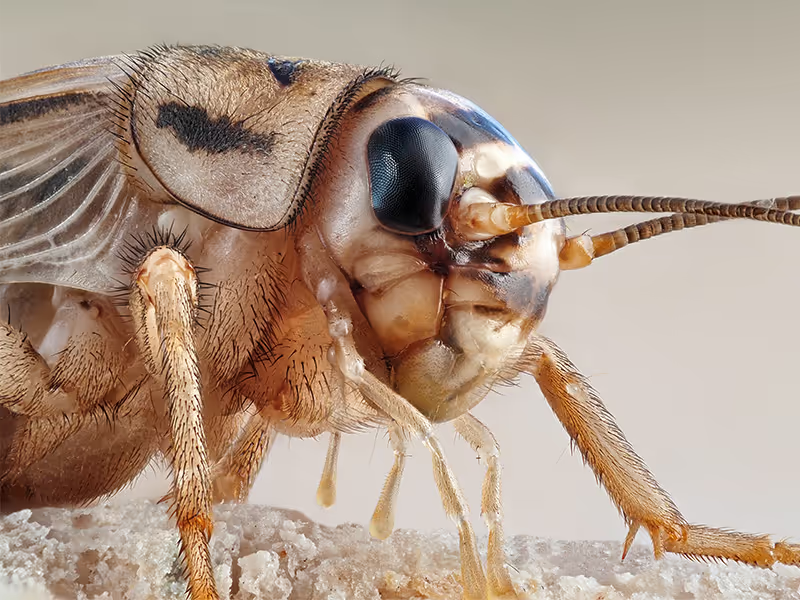House crickets, also known as field crickets, are 16 to 21 millimeters long. They have six legs with prominent knee joints. The back legs are larger and used to propel the crickets into the air. On the lower part of the back legs are tiny spines. At the rear end, two long appendages called cerci stick out at 45-degree angles on each side. Between the cerci is a needle-like structure called an ovipositor, which only females have. They use it to deposit eggs into the soil.
House crickets have long, flat wings on their backs. This feature helps differentiate them from other common crickets in our area, such as camel crickets. Camel crickets don’t have wings and have a spider-like appearance, which is why they’re often called spider crickets or sprickets.

House crickets eat a wide variety of materials, both outdoors and indoors. When they come inside, they may feed on:
These insects are omnivores and rarely run out of food inside man-made structures.
Crickets can enter homes in many ways. Here are a few common entry points to check when pest-proofing or weatherproofing your home:
When inspecting your exterior, pay close attention to outdoor debris or overgrown vegetation, which can attract house crickets. These insects are more likely to enter buildings located near areas with hiding places, food sources, and high humidity.
House crickets are not directly harmful to human health. They rarely bite, and if they do, the bites are minor. The primary concern is their potential to damage property.
Male crickets chirp to attract females. Nighttime offers less background noise, making it easier for them to be heard. Additionally, house crickets are nocturnal. They are more active at night when temperatures are cooler, predators are less active, and their vision and sensory organs function better in dim lighting.
House crickets can complete their entire lifecycle indoors. This means they may stay inside for the duration of their lives. While females prefer to lay eggs in soil, they can also deposit them in carpets, rugs, and structural voids.
Although not a major health threat, house crickets can damage property and become a significant nuisance due to their chirping. There is also a small risk of food or surface contamination from the waste materials they leave behind.
House crickets can access hard-to-reach areas inside a home, making them difficult to eliminate completely without professional help. Even if you remove one cricket, the problem will persist unless you address how they’re getting in. We recommend enrolling in a home pest control plan.
At Harbor Pest Control, our residential plans target house crickets and other common pests, offering ongoing treatments to prevent new infestations.
Here are several steps you can take to help prevent house crickets from getting inside:
If, despite your best efforts, crickets or other pests show up inside, our team is ready to help!





Helpful Tips & Info